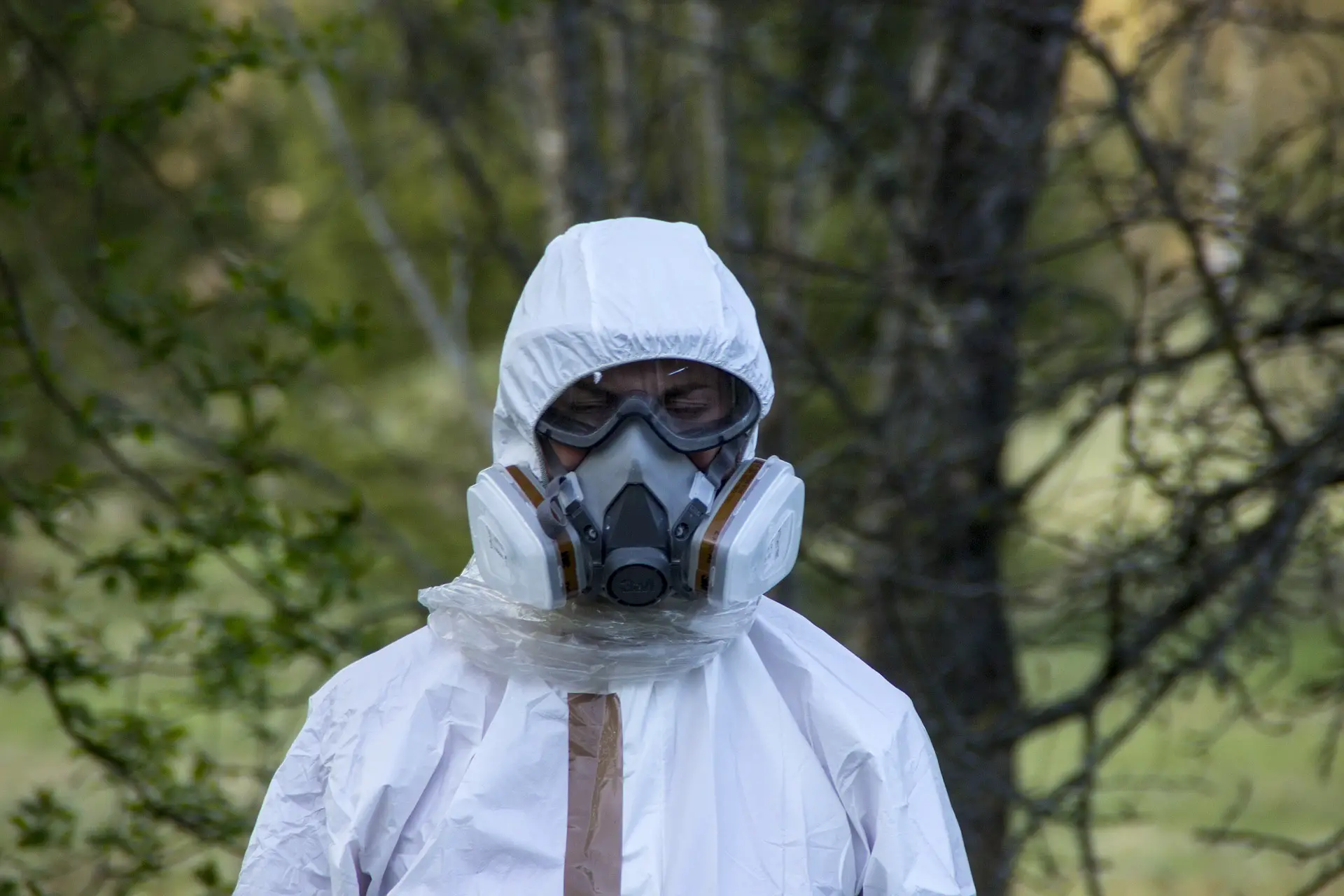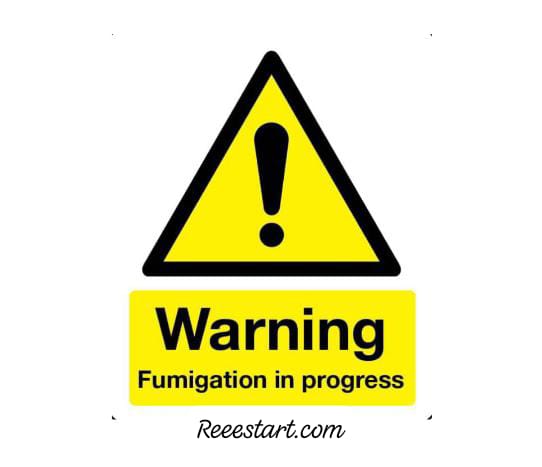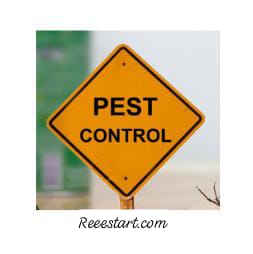Personal protective equipment such as clothing is one of the most important safety precautions when applying pesticides, and It depends on the activity to be performed and, of course, the type of insecticides used.
Personal protective equipment
In general, it is recommended to use the following minimum personal protective equipment:
- Protective goggles for the eyes.
- Long rubber or PVC gloves.
- Rubber or PVC boots.
- Long coat for body protection.
- Head covers.
- Respiratory protection device for lung protection.
Protective goggles for the eyes
- Ensure the cleanliness of your hands or the gloves you are wearing before wearing protective goggles.
- Ensure proper positioning of the straps on the face if you are wearing goggles.
- Everyone should have their own protective goggles specifically for use with insecticides, do not use these protective goggles for other purposes, tips and advice on choosing protective goggles
- Purchase lenses resistant to ultraviolet rays, colored lenses with anti-fog coating and scratch resistance.
- Check the adjustability of the straps on the protective goggles to secure them comfortably on the face.
- Ensure good peripheral vision.
- Store protective goggles securely and away from light and dust, preferably in a clean plastic bag.
- Completely avoid removing protective goggles to rub or clean your eyes without first ensuring the cleanliness of your hands, as well as the water used to clean your eyes.
Long rubber or PVC gloves
Hands and wrists are the most exposed parts of the body to insecticides most of the time, as you use your hands to open insecticide containers, measure the undiluted product, and when using sprayers that may leak or drip.
Wear gloves to protect your hands and wrists while mixing insecticides, spraying insecticides, and cleaning your equipment.
Wash your hands before wearing gloves, and clean the gloves before removing them.
Tips and advice on choosing gloves
There are many types of chemical-resistant materials used to make gloves, including insulating films;
- butyl rubber.
- nitrile rubber.
- neoprene rubber.
- natural rubber.
- polyethylene
- polyvinyl chloride (PVC)
- Viton, This provides different levels of protection.
- Check the pesticide label to determine the type of gloves required for the insecticide used.
- Remember that elbow-length gloves provide more protection.
- Check the size for comfort, and ensure that the gloves provide sufficient movement for the hand and fingers.
- Always wear unlined gloves and rinse gloves immediately if exposed to undiluted insecticide.
- Do not wear linen, leather, cotton, or fabric gloves unless specified on the pesticide label.
Rubber or PVC boots
Wear rubber boots because it is considered the most important Personal protective equipment, It helps to protect your legs and feet from spilled insecticides when spraying down, and from exposure to sprayed leaves.
- Ensure the cleanliness of the boots inside and outside and that they are in good condition before wearing them, and wear coat legs or pants over the boots to prevent spray from entering inside the boot.
- Choose non-lined chemical-resistant boots specifically designed for use with insecticides.
- Check the slip resistance of the boot sole, and ensure that the boot reaches your knees and fits well.
- Do not wear boots that leak or become damp inside due to insecticides.

Long coat for body protection
Wear body protection equipment (whether a long-sleeved shirt and long pants or a full coat) over work clothes so that you are wearing two layers of clothing.
- Wear work clothes and button the shirt to the neck.
- Also wear personal protective equipment over work clothes, and tighten personal protective equipment up to the neck.
- Wear the pant legs of the personal protective equipment over the shoes from the outside; so that insecticides do not leak inside the boot.
- Wear gloves tucked inside the shirt sleeves when spraying down or horizontally, and tuck the shirt sleeves into the gloves when spraying up or horizontally.
- Wrap the gap between the sleeves and gloves with tape when spraying up or horizontally.
- The coat consists of one piece or two pieces and covers the main part of the body, and there are types with a head cover for head and neck protection.
Choose a coat that meets the following specifications:- Loose for easy movement, flexible at the wrist and ankle, and with a head cover to prevent insecticides from touching the skin.
- No exterior pockets that may be filled with insecticides, covers the entire body and arms when stretched, and is lightweight.
- Does not absorb insecticides and does not tear easily, can be washed if reusable.
- Select a shirt and pants that are in good condition and do not absorb insecticides.
- Ensure the safety of all zippers and buttons, and cut all exterior pockets on the shirt.
Respiratory Filter Devices to Protect the Lungs
Protect your lungs by using a respiratory device, as spray droplets can spread in the air and quickly evaporate to become very small particles that can be easily inhaled into the lungs.
- The risk of inhaling insecticide spray is increased when spraying fine droplets and ultrafine droplets upwards or horizontally in a closed area or with the wind blowing towards you.
- Please be cautious when using hollow cone nozzles at high pressures, as they can release fine droplets and ultrafine droplets.
- In most cases, there is no need for respiratory protection, however, when exceeding exposure guidelines for airborne substances and comfort levels or both, a certified and filtered air respiratory device must be used.
- Respiratory devices are designed to filter out small droplets of insecticides before they reach and harm the lungs.
- Check the cleanliness of the respiratory device and its good condition, and ensure that all straps fit properly.
- Also, make sure the respiratory device fits to ensure the proper size for you, and that the seals between the respiratory device and your skin are adequate. Make sure the facial hair and eye glasses do not obstruct the seals.
- Check that the respiratory device you will use is in good condition, and refrain from using a dust mask instead of a respirator.

Head covers for head protection
Hats or head covers are used to protect the head from falling droplets of insecticides during spraying upwards, and from touching sprayed leaves.
- Use gloves or clean hands to put on or remove the hat or head cover.
- If you are wearing a hat, tie up long hair and cover it, and ensure the hat is securely on your head.
- If you are wearing a coat with a head cover, make sure your hair is inside the cover.
- If you are wearing protective goggles, make sure the hat does not puncture the seal between the goggles and your skin.
- The hat must be designated for use with insecticides only.
- Do not wear baseball caps or any type of hat that may absorb insecticides, and do not continue wearing a hat that has become damp from spraying.
Ways of pesticide impact and personal safety rules and Persnal protective equipment
The ways in which toxic pesticides enter the body vary, as pesticides can enter your body during mixing, application, or cleaning processes.
There are generally three ways that a chemical substance can enter the body:
- Through the skin (dermally).
- Through the lungs (by inhaling).
- Through the mouth (by swallowing).
Whether in high or low concentrations, these substances can cause temporary or permanent organic disorders. Therefore, attention must be directed towards protecting humans, animals, and the environment in general from these substances.
- Do not eat, drink, or smoke when handling pesticides.
- Wash hands and face thoroughly with soap and water before eating, drinking, or smoking.
- Wear protective clothing when handling and transporting pesticides in storage areas.
- Wear a protective head cover and protective goggles.
- Also wear a protective face mask.
- Wear gloves made of rubber or plastic.
- Wear protective footwear.
- Avoid touching your face or eyes with contaminated gloves or hands when handling pesticides.




